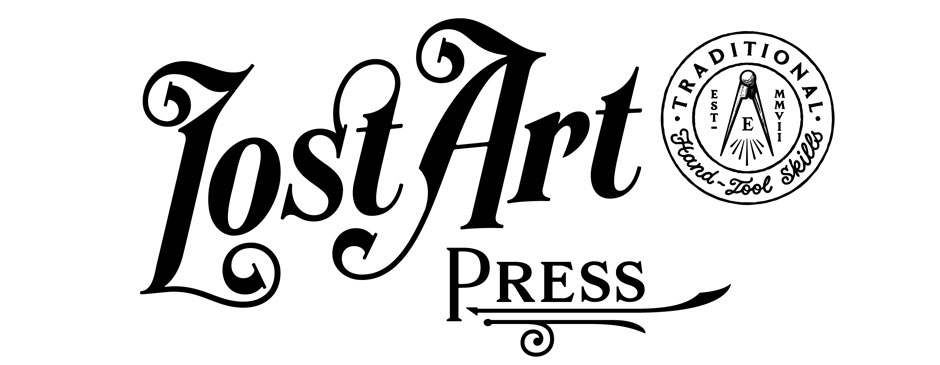
With our final class at the Willard Street workshop behind us, I’ve rearranged the bench room, the Mechanical Library and the machine room for four woodworkers, instead of a classroom.
First and biggest change: We scotched four workbenches. We sold three and will move the fourth to Megan’s workshop. That change gave us space for an 18” x 30” x 60” assembly table that I built last week. I’ve always loved low assembly benches, but I’ve never had room for one – until now.
I’ve arranged the four remaining benches so they stand alone. You can walk all around them. They are all parallel to one another, just like in the workshop shown in Plate 11 of “l’Art du menuisier.” And they’re arranged by seniority – on purpose. Apprentice Katherine is up front by the window, then Journeyer Kale, Editor Megan and me at the back.

The idea is that the more experienced people will always be able to see what the less-experienced people are up to. And be able to jump in (or shout a warning) if something goes amiss.
The back of the bench room now has the junior editors’ editorial workstations – I built their height-adjustable table using a 1960s-era drafting table and a massive tongue-and-groove white pine top. There’s lots of space to spread out to write, edit and design.
In the Mechanical Library, more changes are afoot. Megan is staying in her same cubicle but will need a new desk (the desk Megan has been working on for the last 10 years is Lucy’s). The rest of the library is being returned to its original configuration: loveseat plus a tool chest acting as a desk, with everything facing my stereo. This is how I like to write and listen to records.
In the machine room, my Delta 14” band saw is going to Megan’s shop. It is being replaced by the JET 14” industrial band saw that used to be in the bench room. With no classes in the bench room, we need only one band saw up there. And the General 490 is staying up front.
I have additional small changes planned, and I’m sure we’ll move things around again. But I think the new bench arrangement works already. Photography is easier without benches being butted up against each other. And it’s nice to be able to get to all sides of your work. Plus, all the benches have the same arrangement of natural light: Loads of light from the front of the bench with a little side light from the south-facing windows.
Mostly, however, it’s quieter and we all have a little more room to move.
— Christopher Schwarz
Editor’s note: Our ATCs facing off across the room reminds me of the dueling banjo scene from Deliverance.” I do not, in this scenario, know which of us is Lonnie …










